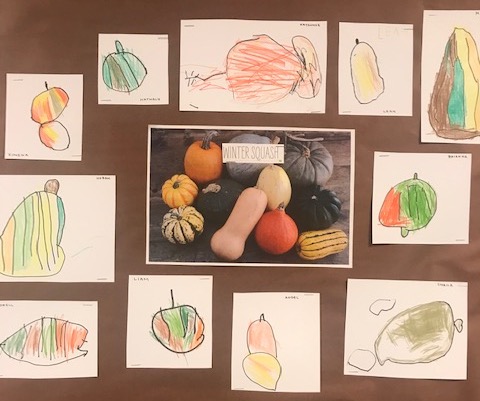400 central Idaho kids impacted by charter program
By Eric Valentine

As all of us prep for, typically, our highest-calorie meal of the year and the special holiday sweets and dinner parties that follow over the next 30-plus days, there’s something in the backs of our minds: a prospective new year resolution that will get us back on a healthier track. But for up to 15 percent of Idaho kids, the healthier track has already proved elusive. That’s the percent of children deemed “obese.”
Obesity is the condition of having too much body fat, which means one has an increased risk of diabetes, heart disease, stroke, arthritis, and even some cancers. It is one of the top two conditions (the other is diabetes) the Idaho Department of Health and Welfare is putting human and financial resources toward to combat. And the state’s health agency has started partnering with University of Idaho Extension to offer Blaine County preschoolers an upper hand in keeping their obesity risk low.
It’s a program called Farm to Early Care and Education (Farm to ECE) and it focuses on introducing local, fresh fruits and vegetables to children aged 3 to 5 years old. A grant from the Department of Health and Welfare allowed UI Extension to launch a pilot of the program in the South Central Public Health District from September 2019 to May 2020. If it’s successful, it could be offered statewide and perhaps even one day influence the national effort to curb childhood obesity.
Recent studies show that obesity rates for 10- to 17-year-olds in America hovers around 16 percent. Rates for adults approach 40 percent.
Three preschools in the Wood River Valley are recipients of the program, according to Farm to ECE program coordinator Alleah Schweitzer.
“Eventually, we hope to build the curriculum to serve all students in the K-12 system,” Schweitzer said.
A Culinary Curriculum
Schweitzer makes it clear that buy-in from the teachers is what makes it possible to get buy-in from the kids. It’s her job to meet with educators regularly to review curriculum goals and deliver teaching materials which—in addition to kits—typically include fresh fruits and vegetables kids can sample with their teachers in class. In some cases, Schweitzer said, teachers are going home, making recipes and then sharing the results with their class.
“We are lucky to have educators who are willing to go above and beyond,” Schweitzer said.
Each month, the program highlights one item of produce in particular. Teachers do a show-and-tell and taste of the item, and then kids learn about the food’s health impact and the different ways people enjoy it.
September’s produce was peppers, October was beets, and November is squash.
A Program That Produces
Schweitzer is hopeful the program will continue past May 2020, and the early results are making that seem more likely than not. According to Schweitzer, constant evaluation of the program’s effectiveness is being conducted by UI Extension. Cards are given to students to fill in, with stickers that indicate whether they’ve tried the produce before, whether they like it, don’t like it, etc. The goal is to see an increase in willingness to try new food and an increase in healthy food consumption.
“We assume that kids are picky or close-minded about food, but that’s not really true,” Schweitzer said. “It’s been a pleasant surprise to see kids are engaged with this.”
UI Extension will also be surveying teachers and parents to see how well the program goals are being met.
“We’re seeing positive results so far, and I hope Health and Welfare can leverage what we’re doing in the future,” Schweitzer said.

